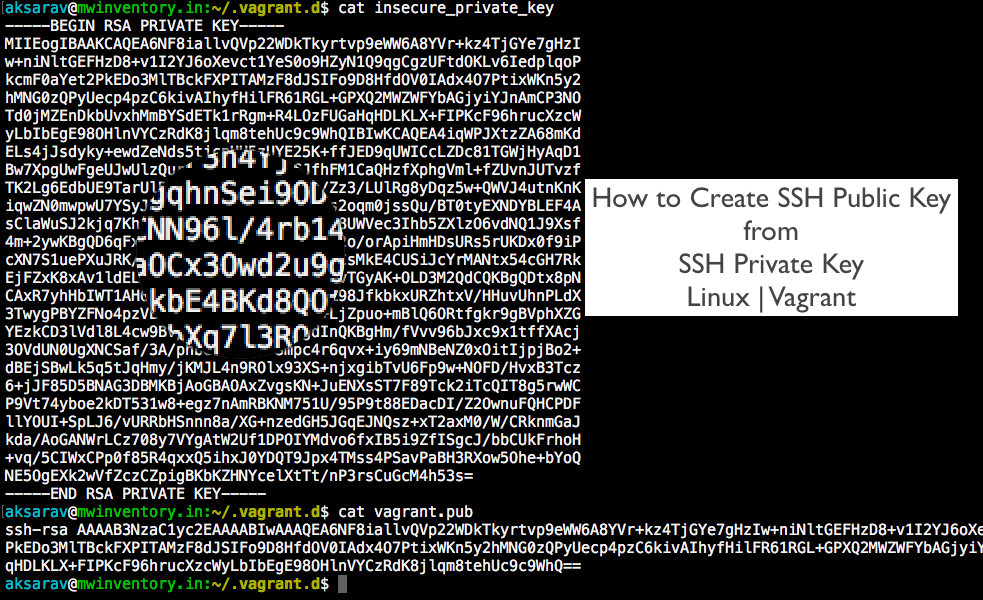$ ssh-keygen Generating public/private rsa key pair. Enter file in which to save the key (/home/vagrant/.ssh/idrsa): Enter passphrase (empty for no passphrase. Sep 06, 2018 -t Specifies the type of key to generate. Having added the public key to our server, let’s test it and ensure that we can use it to connect to the server. All vagrant keys have a comment. Config.ssh.privatekeypath (string, array of strings) - The path to the private key to use to SSH into the guest machine. By default this is the insecure private key that ships with Vagrant, since that is what public boxes use. If you make your own custom box with a custom SSH key, this should point to that private key. When SSH sharing is enabled, Vagrant generates a brand new keypair for SSH access. The public key portion is automatically inserted into the Vagrant machine, and the private key portion is provided to the user connecting to the Vagrant share. This private key is encrypted using a. Having said that, the Vagrant box file is a zip or (optionally gzipped) tar archive. You can include the private key for example to the top level directory there, and add the public key to the vagrant ssh user's authorizedkeys in the VM itself. Then to configure Vagrant to use the key you include a Vagrantfile to the box with content like.
To sign an assembly with a strong name, you must have a public/private key pair. This public and private cryptographic key pair is used during compilation to create a strong-named assembly. You can create a key pair using the Strong Name tool (Sn.exe). Key pair files usually have an .snk extension.
Note
In Visual Studio, the C# and Visual Basic project property pages include a Signing tab that enables you to select existing key files or to generate new key files without using Sn.exe. In Visual C++, you can specify the location of an existing key file in the Advanced property page in the Linker section of the Configuration Properties section of the Property Pages window. The use of the AssemblyKeyFileAttribute attribute to identify key file pairs was made obsolete beginning with Visual Studio 2005.
Vagrant Generate Ssh Key
Create a key pair

To create a key pair, at a command prompt, type the following command:
sn –k <file name>
In this command, file name is the name of the output file containing the key pair.
The following example creates a key pair called sgKey.snk.
If you intend to delay sign an assembly and you control the whole key pair (which is unlikely outside test scenarios), you can use the following commands to generate a key pair and then extract the public key from it into a separate file. First, create the key pair:
Next, extract the public key from the key pair and copy it to a separate file:
Once you create the key pair, you must put the file where the strong name signing tools can find it.
Symmetric Key
When signing an assembly with a strong name, the Assembly Linker (Al.exe) looks for the key file relative to the current directory and to the output directory. When using command-line compilers, you can simply copy the key to the current directory containing your code modules.
If you are using an earlier version of Visual Studio that does not have a Signing tab in the project properties, the recommended key file location is the project directory with the file attribute specified as follows: